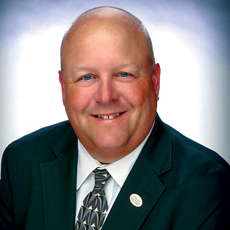
Long-term care facility employees have a responsibility to ensure an optimal healthcare environment to enable resident recovery, respite or relief, and environmental cleanliness is crucial to confer a sense of safety and comfort for the residents. Environmental cleanliness is also crucial to long-term care worker retention.
It is widely known that all senior care workers such as nurses, nursing assistants, and environmental service employees are occupationally exposed to a variety of infectious diseases through the course of providing resident care. It’s also increasingly recognized that you can address some senior care staffing shortages by increasing infection prevention, reducing infection transmission risk and producing a safe and healthy environment for your employees.
Infection transmission to employees can impact staffing shortages
The risk of infection for employees not only depends on the prevalence of disease in the resident population, but also the nature and frequency of exposures. One commonly known way care workers are exposed to infectious agents is through direct contact, including person-to-person contact or exposure to bodily fluids, as would be the case if a resident sneezed or coughed in close proximity to a caregiver.
Disease-causing organisms can also be passed by indirect contact. Indirect infections happen when healthy people come into contact with contaminated inanimate objects, such as a tabletop, doorknob, bed rail or faucet handle. An example would be when a resident sneezes or coughs into the air, sending infectious droplets into the air that can land between three and six feet away. A caregiver may subsequently touch the surface with their hands, and then touch their eyes, nose or mouth.
For senior care workers, exposure to dangerous infectious agents is scary and could result in a serious illness, inability to work, and decreased engagement due to safety issues in the workplace. For a senior living facility, transmission of an infectious agent to employees could translate to additional issues including:
● Intermittent staffing shortages due to employee illness
● Permanent loss of high-performing employees due to illness or fear of exposure
● Increased hiring costs, temporary worker, or overtime to address staffing shortages
● Spread of infectious agents from caregivers to residents
● Lowered care quality ratings
Infection control is crucial to LTC workforce sustainability
Did you know that a lot of indirect staff exposure through contact with contaminated surfaces in senior living is preventable? There are many ways to ensure employee safety and reduce infection transmission by maintaining infection prevention protocols and ensuring proper employee training.
Having an environmental cleaning system in place is an important part of infection control to address indirect contact with infectious agents. The best systems take the guesswork out of cleaning and sanitizing resident care and other areas of your facility, helping employees feel confident that you take their safety seriously. Consider adopting a high-quality antimicrobial cleaning system that simplifies the cleaning process by ensuring your staff has the perfect product to clean any surface.
Healthy employees benefit everyone
Reducing exposure risk and increasing employee safety requires and multi-tiered approach, but an effective environmental cleaning system is an important piece.
When employees feel safe at work and cared for by their employer, they are more engaged. A workforce full of engaged employees who are fully involved in, and enthusiastic about, their work result in:
● Improved resident care and higher care quality scores
● Reduced employee turnover
● Reduced employee absences due to an exposure-related illness
● Reduced costs associated with employee recruitment and retention
● Increased staff morale, productivity and profitability
Using the right tools to create safer working conditions makes it easier for you to retain quality employees. Facility administrators are responsible for both resident and worker wellness. Average household cleaning supplies are not tested against the same circumstances that are present in a skilled nursing facility. Ensure that everyone in your building is safe and comfortable by providing an environmental cleaning system that can handle the specific needs of a healthcare facility.
Greg Snoddy is the Vice President of Healthcare Sales-Senior Living for Encompass Group. He can be reached at [email protected].



